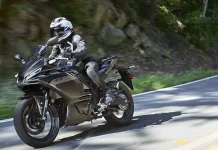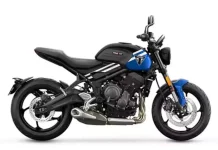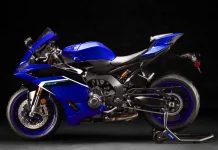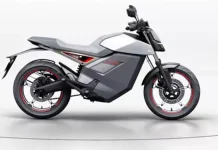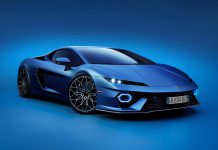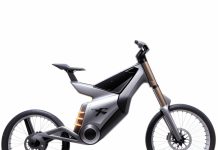Power, Performance, Prestige
Explore the definitive comparison of the Triumph Daytona 660 and Kawasaki Ninja 650, two leading competitors in India’s middleweight sport tourer market.
This thorough comparison examines design, performance, features, and more, highlighting the sleek aesthetics, cutting-edge technology, robust engines, and precision handling of each bike.
Discover their distinct color choices, fuel capacities, and weight differences. Ideal for motorcycle enthusiasts and potential buyers, this comparison offers critical insights to inform your decision. Understand the unique strengths and features of each bike in this detailed matchup.

Introduction to Middleweight Sport Tourers
In the realm of middleweight sport tourers, a new battle has commenced with the entry of the Triumph Daytona 660 in the Indian market. This segment, known for its blend of sports performance and touring comfort, now witnesses a face-off between the British contender, Triumph Daytona 660, and the established Japanese rival, the Kawasaki Ninja 650.
Design Dynamics: Aesthetics of Power and Poise
Triumph Daytona 660: Sleek British Engineering
The Triumph Daytona 660 exudes a sharp and youthful aura, encompassing a split LED headlight setup with a transparent visor. Its design ethos is deeply rooted in the sleekness typical of British engineering, making it visually distinct. The Daytona 660’s fuel tank contributes to its lean profile, setting a new benchmark in design elegance.
Kawasaki Ninja 650: The Bold Japanese Stance
In contrast, the Kawasaki Ninja 650’s design language, though also featuring the split LED headlights and sharp bodywork, leans towards a slightly bulkier look. This is primarily due to its more pronounced fuel tank, giving it a robust and aggressive stance, synonymous with Japanese design philosophy.
Color Palette: Expressing Individuality
Triumph Daytona 660’s Color Schemes
Triumph offers the Daytona 660 in three captivating paint schemes: Satin Granite with Satin Jet Black, Snowdonia White with Sapphire Black, and Carnival Red with Sapphire Black. This range of choices allows riders to express their individuality through their machine.
Kawasaki Ninja 650’s Signature Look
On the other hand, the Ninja 650 maintains a singular focus with its iconic Lime Green paint scheme, a signature of the Kawasaki brand, exuding a sense of brand identity and exclusivity.
Feature-Forward: Technological Excellence on the Road
Daytona 660’s Advanced Features
The Daytona 660 is not just about looks; it’s a technological marvel too. Equipped with LED illumination and a TFT display with optional smartphone connectivity, it offers turn-by-turn navigation, call, music, and SMS control. Its ride modes – Road, Rain, and Sport, along with traction control and dual-channel ABS, place it at the forefront of motorcycle technology.
Ninja 650’s Tech-Savvy Approach
The Ninja 650, while also featuring LED illumination and a TFT display for call and SMS access, focuses on the essentials. It offers traction control and ABS but misses out on the diverse ride modes, a feature that could be a deciding factor for tech-savvy riders.
Powertrain and Performance: The Heart of the Matter
Daytona 660’s Engine Specifications
At the heart of the Daytona 660 lies an inline three-cylinder, 660cc, liquid-cooled engine, boasting 95bhp at 11,250rpm and 69Nm at 8,250rpm. Paired with a six-speed gearbox and an optional quickshifter, the Daytona is a powerhouse of performance, significantly outpacing its rival in terms of horsepower.
Ninja 650’s Engine Dynamics
The Ninja 650, however, employs a 649cc parallel-twin engine, outputting 68bhp and 64Nm. While it may not match the Daytona in raw power, the Ninja’s engine is renowned for its reliability and smooth power delivery, making it a versatile choice for both city commuting and long-distance touring.
Hardware and Handling: The Art of Riding
Daytona 660’s Riding Mechanics
The Triumph Daytona 660 showcases its superior hardware with Showa 41mm Separate Function Big Piston front forks and a preload-adjustable monoshock. It is equipped with twin 310mm front discs and a single 220mm rear disc, complemented by ABS. The 17-inch wheels with 120/70 front and 180/55 rear tyres ensure excellent grip and handling dynamics.
Ninja 650’s Hardware Setup
Kawasaki’s Ninja 650 features 41mm telescopic front forks and an offset, linked rear shock, alongside twin 300mm front and a single 220mm rear disc. Its 17-inch wheels are fitted with 120/70 front and 160/60 rear tyres, offering a balanced ride suitable for various road conditions.
Weight and Fuel Efficiency: Balancing the Scales
Daytona 660’s Dimensions
The Daytona 660 weighs in at 201kg and is equipped with a 14-litre fuel tank, a combination that promises a balance between agility and fuel efficiency, crucial for sport-touring motorcycles.
Ninja 650’s Lightweight Advantage
Comparatively, the Ninja 650 is slightly lighter at 196kg and has a marginally larger 15-litre fuel tank, potentially offering a longer mileage.
Absolutely! Here’s a comparison of the Triumph Daytona 660 and Kawasaki Ninja 650 organized into a table for clarity:
| Feature Category | Triumph Daytona 660 | Kawasaki Ninja 650 |
|---|---|---|
| Design | Sleek and sharp with a less bulky fuel tank. | Sharp with a bulkier fuel tank for a robust appearance. |
| Color Options | Available in three schemes: Satin Granite/Jet Black, Snowdonia White/Sapphire Black, Carnival Red/Sapphire Black. | Available in Lime Green. |
| Features | LED illumination, TFT with optional smartphone connectivity, ride modes (Road, Rain, Sport), traction control, dual channel ABS. | LED illumination, TFT with smartphone connectivity, traction control, ABS. Lacks diverse ride modes. |
| Engine | Inline three-cylinder, 660cc, 95bhp at 11,250rpm, 69Nm at 8,250rpm. Six-speed gearbox with optional quickshifter. | Parallel-twin, 649cc, 68bhp, 64Nm. Six-speed gearbox. |
| Hardware | Showa 41mm Big Piston front forks, preload adjustable monoshock, twin 310mm front discs, single 220mm rear disc, 17-inch wheels (120/70 front, 180/55 rear tyres). | 41mm telescopic front forks, offset rear shock, twin 300mm front discs, single 220mm rear disc, 17-inch wheels (120/70 front, 160/60 rear tyres). |
| Weight and Fuel Capacity | Weighs 201kg, 14-litre fuel tank. | Weighs 196kg, 15-litre fuel tank. |
| Price (Expected in India) | Around ₹9 lakh (ex-showroom). | ₹7.16 lakh (ex-showroom, Delhi). |
FAQs
- Which bike offers more power?
- The Triumph Daytona 660 with its 95bhp engine offers more power compared to the Ninja 650’s 68bhp engine.
- How do the design philosophies of the two bikes differ?
- The Daytona 660 opts for a sleek, less bulky look, while the Ninja 650 has a more robust and aggressive stance.
- Which bike provides more color options?
- The Triumph Daytona 660 offers three color schemes, whereas the Kawasaki Ninja 650 is available in the signature Lime Green.
- Are there differences in the technological features?
- Yes, the Daytona 660 has more advanced features like diverse ride modes and optional smartphone connectivity for navigation, which the Ninja 650 lacks.
- Which bike is lighter and has a larger fuel tank?
- The Kawasaki Ninja 650 is lighter at 196kg and has a slightly larger fuel tank of 15 litres.
Conclusion
The Triumph Daytona 660 and Kawasaki Ninja 650 each bring unique qualities to the middleweight sport tourer segment. The Daytona 660 impresses with its sleek design, superior power, and advanced tech features, catering to riders who prioritize performance and style.
Meanwhile, the Ninja 650, known for its robust build, reliability, and lighter weight, suits those seeking a balanced and versatile riding experience. Ultimately, your choice hinges on your riding priorities, whether they lean towards power and innovation or comfort and dependability. Both bikes offer thrilling and satisfying rides, each adding its distinct character to the realm of middleweight sport touring.
Ready to elevate your riding experience? Dive into the world of middleweight sport tourers and make an informed decision. Compare the Triumph Daytona 660 and Kawasaki Ninja 650 now to discover which bike aligns with your riding style and preferences. Don’t just dream about your next ride, make it a reality.
Choose the motorcycle that speaks to your spirit of adventure and embrace the thrill of the road. Click here to learn more and take the first step towards your next exhilarating journey on two wheels!


